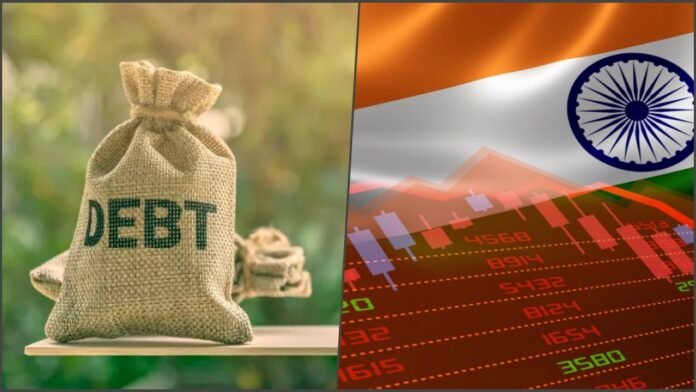
New Delhi: A report by the International Monetary Fund (IMF) on India’s economic situation has triggered a disagreement and protest from the Finance Ministry, which has challenged the IMF’s projections and assumptions. The report, released last Friday, claimed that India’s debt is continuously increasing and could reach 100% of GDP by 2028, making it difficult for the country to repay its debt. The Finance Ministry, however, has refuted the IMF’s estimate and said that the existing loan is in Indian Rupees, so there is no such problem.
IMF’s report paints a grim picture of India’s debt
The IMF’s report, based on the annual Article IV consultation with its officials, reviewed India’s economic performance and outlook amid the COVID-19 pandemic and the recovery efforts. The report praised India’s growth rate and economic reforms but also warned about the rising debt levels and fiscal risks.
The report said that India’s government debt (including both state and center) increased from about 74% of GDP in 2019-20 to about 88% in 2020-21, due to the pandemic-induced revenue shortfall and the stimulus spending. The report projected that the debt ratio would decline gradually to about 84% by 2025-26, but then increase again to about 100% by 2028, assuming that the government continues to borrow at the current pace.
The report cautioned that such a high debt level would pose significant challenges to the country’s fiscal sustainability and macroeconomic stability. The report suggested that the government should adopt a credible medium-term fiscal consolidation plan, which would entail reducing the fiscal deficit, increasing the tax revenue, and rationalizing the expenditure.
Finance Ministry rejects IMF’s estimate and defends its debt management
The Finance Ministry, however, has expressed its disagreement and protest on the IMF’s report, and issued a statement last Friday, saying that the IMF’s estimate of 100% debt in India is wrong and based on unrealistic assumptions. The ministry said that the existing loan is in Indian Rupees, so there is no such problem of currency depreciation or exchange rate risk.
The ministry also said that the government debt (including both state and center) will reduce from about 88% in 2020-21 to about 81% in 2022-23, as the economy recovers from the pandemic and the revenue collection improves. The ministry said that this debt level is still much lower than that of 2002 when it was about 85%.
The ministry also defended its debt management strategy, saying that it has taken several measures to ensure the smooth and efficient functioning of the debt market, such as issuing long-term bonds, diversifying the investor base, and enhancing liquidity. The ministry said that it is committed to maintaining fiscal prudence and discipline, while also supporting the economic recovery and growth.
India’s debt situation in numbers
According to the report of Business Standard, the total debt of the country reached Rs 205 lakh crore in September 2023, of which the Government of India owes Rs 161 lakh crore, while the state governments owe more than Rs 44 lakh crore.
If we compare this with the year 2014, the total debt of the Central Government was Rs 55 lakh crore, which has now increased to Rs 161 lakh crore by September 2023. This means that the debt of the Government of India has increased by 192% in the last 9 years. This includes both domestic and foreign loans.
Out of this, the foreign debt of India was Rs 31 lakh crore in 2014-15, which has increased to more than Rs 50 lakh crore in 2023.
If we divide the country’s total debt by India’s total population, which is estimated to be 142 crores, then today every Indian has a debt of more than Rs 1.40 lakh.
India’s growth prospects remain bright despite the debt challenge
Despite the debt challenge, India’s growth prospects remain bright, as per the IMF and other agencies. The IMF has described India as a star performer and said that India could contribute more than 16% to global growth this year. India’s growth rate also remains strong due to economic reforms in key areas such as digitalization and basic infrastructure.
The IMF report said that India’s economy has emerged very strongly from the Corona epidemic, and is expected to grow by 9.5% in 2021-22 and 8.5% in 2022-23. The report said that during FY 2022-23, headline inflation has subsided and the budget deficit has now come down.

The IMF, while releasing its annual Article-IV consultation with India last Monday, had said that India is on its way to becoming one of the fastest-growing major economies of the world this year. However, India also faces global adversities including global growth slowdown, supply chain disruptions, commodity price volatility, and climate change. The IMF advised India to continue its structural reforms, enhance its social safety nets, and invest in health and education.

















































